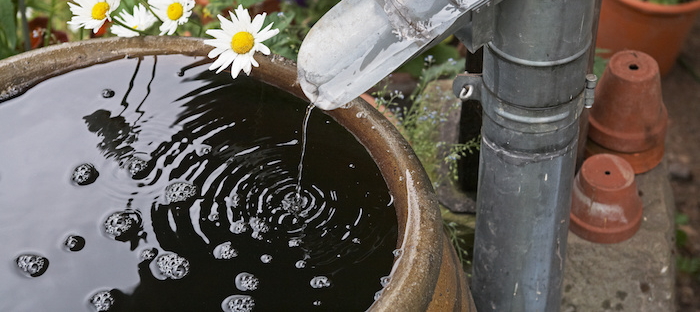Is your rain barrel a breeding ground for mosquito larvae because it was forgotten? Start maintaining your rain barrel today.
A rain barrel can be a great way to save money on your utility bills and provide water for your plants. Collecting Mother Nature’s best-unfiltered water into a large container may seem simple, but it has its challenges. If you are new to rainwater collecting, you may notice two unwanted things growing in the mini-reservoir: alga and insect colonies. You can take a few preventative measures to keep your rain barrel in pristine condition all year.
Close off, open Barrels.
Closed rain barrels are a great option if you have the choice. The “closed tank system” is less prone to bugs entering and breeding and helps prevent debris accumulation — a problem that open-top barrels are prone to. If you have a barrel without a cover, you can use an old trashcan lid or barrel top to pop on top. Even if your barrels are closed, you should check them carefully to ensure that any openings or exits where water can enter and leave the container are secure.
Install Mesh Screens
Install a mesh over your barrel if it can’t close. These screens prevent mosquitoes, other pests, and leaves from laying eggs in your barrel. They also keep it free of sticks, leaves, and other materials that could clog it. Mesh can also prevent children or small pets from accidentally falling into large bodies of water. You’ll need to ensure you regularly use rainwater collected by a mesh screen. If you don’t, your mesh screen could become submerged.
Some rain collectors use commercial larve tablets instead of or in addition to mesh screens. These tablets dissolve into water, releasing a chemical that prevents mosquito eggs from growing. Most of the time, you can still use the same water for gardening. However, it is always best to follow the instructions on the packaging.
Avoid Direct Sunlight
Are you worried about the algae in your rain barrels? Don’t be. Algae can grow in barrels exposed directly to sunlight, especially those of a light color or white. You can fix this problem by draining the barrel and washing it with bleach and water. Consider painting the container black when you are finished. The dark paint will reduce the direct sunlight the water can receive, reducing or eliminating the algae problem.
Do Not Be Afraid to Use It Up
Rainwater collectors are usually very knowledgeable, but this shouldn’t prevent them from using the water they have been collecting. We mentioned that using your rain barrel regularly will help you avoid mosquitoes and their eggs. Some sources suggest using rainwater between five and seven days after collecting it. This makes sense, as mosquitoes can grow from an egg to an adult within seven to ten days. It is vital to empty your barrel every week if you don’t plan on using a mesh screen or lid. Your frequent use of rainwater creates some barrel space to accommodate those random summer top-offs.
Check Your Rain Barrels Regularly
You can easily set up your rain collection system for the summer and then forget about it until the next storm. It’s still important to check your rain barrel semi-regularly. This will allow you to catch any potential problems at their earliest stage. You’ll need to check each barrel’s lids and mesh screens and remove any debris. Check that all water in and outways are securely fitted. Give your barrels a thorough wash multiple times during the wet seasons to prevent future algae issues.
Rain Barrel Safety Rules
Collecting rainwater can be great for your plants, lawns, and gardens. But think twice before you drink it or give it to your pet. While safe to use in gardens, this water still contains some contaminants you don’t want on your body. Especially if it’s runoff from a roof or gutter, roofs, and gutters treated with Pesticides and other chemicals may contaminate rainwater collected and render it unusable, even for your garden.



